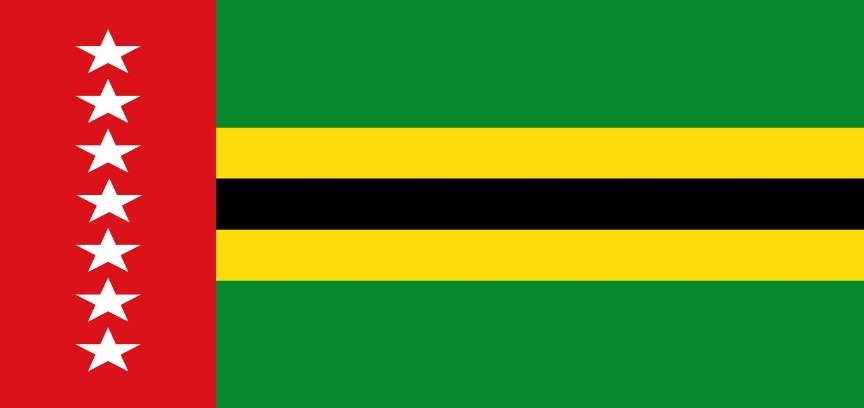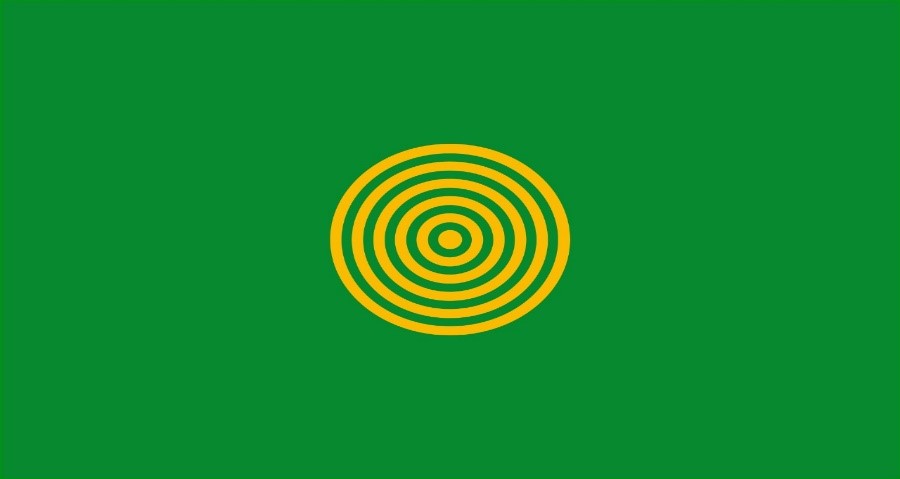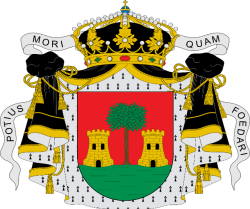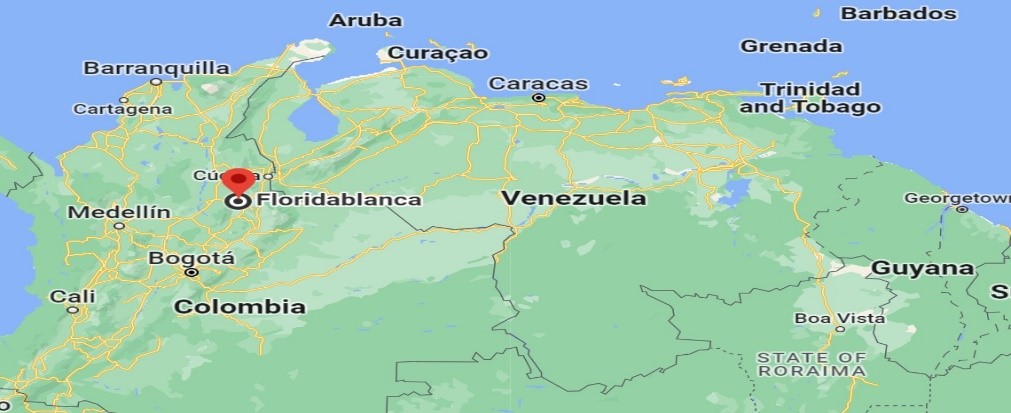Floridablanca
Department
Santander, Colombia

Flag of the city
The flag features a solitary green stripe, symbolizing wealth and fertile land, with a deep historical connection dating back to the days when it was referred to as the Hacienda Palmita or Black Hand. It carries the hope of the Florideñas people who have accompanied it throughout its history. Positioned prominently at the center of the flag is the object of reverence from Guane culture, which once thrived in this region and serves as a symbol of progress for the municipality. The image of the Guane Sun is intricately engraved on the eastern side of the Sun Stone. This flag was officially adopted by Decree 003 on November 4, 1977, under the leadership of Mayor Carmen Cecilia Pérez Gómez.

Seal of the city

Slogan of the city
Floridablanca derives its name from Don Narciso Clavería y Zaldúa, the former Spanish governor-general. Renowned as the “Rice Granary of Pampanga,” the town has earned its reputation for its significant rice production. Adding to its natural splendor, Floridablanca is nestled against the backdrop of Mount Arayat, a dormant stratovolcano that graces the region’s landscape.
Geography of the city
Floridablanca is situated in the Eastern Ranges of the Colombian Andes at coordinates 07°13’N latitude and 73°04’W longitude, with an elevation of approximately 925 meters (3,035 feet) above sea level. The city’s location is characterized by varied topography, with higher Andes Mountains to the east, which rise due to the influence of the north-south-oriented Bucaramanga-Santa Marta Fault, a major fault line in Colombia. This region is known for its seismic activity, being part of the Bucaramanga Nest, the world’s second-most seismically active area. Floridablanca enjoys a tropical climate, classified as Aw (tropical savanna climate) by the Köppen-Geiger system, with an average annual temperature of 23.6°C (74.5°F) and an annual rainfall average of 1,055 millimeters (41.5 inches). Surrounding the urban area, you’ll find geological formations such as the Jurassic Girón and Jordán formations, while to the east of the Bucaramanga-Santa Marta Fault lies the Precambrian Bucaramanga Gneiss and Early Jurassic La Corcova Quartzmonzonite. The Ruitoque Massif consists of the Tambor Formation, and the rural areas surrounding the city are home to the endemic San Gil climbing salamander (Bolitoglossa nicefori).

History
Prior to the Spanish conquest, the region of Floridablanca was inhabited by the Guane people. Conquistador Martín Galeano subjected the Guane to the rule of the Spanish Empire when he established Vélez in 1539, a territory previously part of the Muisca Confederation. Modern-day Floridablanca was officially founded on November 7, 1817, under the name “Floridablanca de San Juan Nepomuceno” by Javier Guerra de Mier. The construction of the San Juan Nepomuceno church was completed in 1832.
According to the official census conducted by DANE, Floridablanca is home to 262,165 residents, making it the second most populous city in Santander. Of this population, 47.37% are male, while 52.63% are female. Impressively, 95.6% of individuals over the age of 5 possess literacy skills, resulting in an illiteracy rate of just 4.4%.

Population
307,896(2020)
One photo representative of the city
The Cerro del Santísimo Ecopark, situated in the Vereda Helechales, a rural part of Floridablanca, Santander, boasts a notable 35-meter tall sculpture of El Santísimo, with an additional 6.1-meter pedestal. The design includes a triptych structure featuring two panoramic elevators and stairs leading to the primary observation deck. This deck, situated at a height of 40 meters, offers sweeping views of Floridablanca and parts of Bucaramanga. The park becomes a focal point for pilgrims during Holy Week, particularly for the Via Crucis ritual on Good Friday. A 1,380-meter cable car system connects visitors from the Hacienda La Esperanza, a historic mansion in Floridablanca’s urban area previously home to the Clausen Brewery – the country’s first brewery. The park was inaugurated on June 20, 2015, by the then-Governor of Santander, Richard Aguilar Villa, who later faced corruption charges.
The park’s development stirred discussions among the local populace. While initial promises projected broader benefits, many felt the final result fell short. The prominent sculpted figure, the park’s centerpiece, also ignited debates regarding the expected religious neutrality of public structures.

Etymology
“Floridablanca” beautifully combines two Spanish terms: “Florida,” signifying “flowery” or “blossoming,” and “Blanca,” meaning “white.” The town of Floridablanca in Santander, Colombia, proudly carries this name, paying tribute to José Moñino y Redondo, the Count of Floridablanca. A significant figure in Spanish history, he served as the Chief Minister to King Charles III of Spain during the 18th century and left an indelible mark on Spanish governance. As you explore Floridablanca, you’re not just walking through a town but also stepping into a legacy that echoes Spanish heritage and historical connections. Welcome to Floridablanca – where history meets beauty.
What the city is known or famous for
Floridablanca, a charming city in Colombia, is renowned for its lush parks and the enigmatic Piedra del Sol. This ancient rock, adorned with spirals and circles, stands as a testament to the artistry of the Guane people from over a millennium ago. Moreover, the city proudly hosts “El Santisimo”, the tallest statue of Jesus Christ in Colombia. Towering at an impressive 40 meters (130 feet) and weighing a hefty 40 tonnes (88,000 pounds), this statue is not just a religious symbol but also a beacon of Floridablanca’s cultural and historical heritage.
